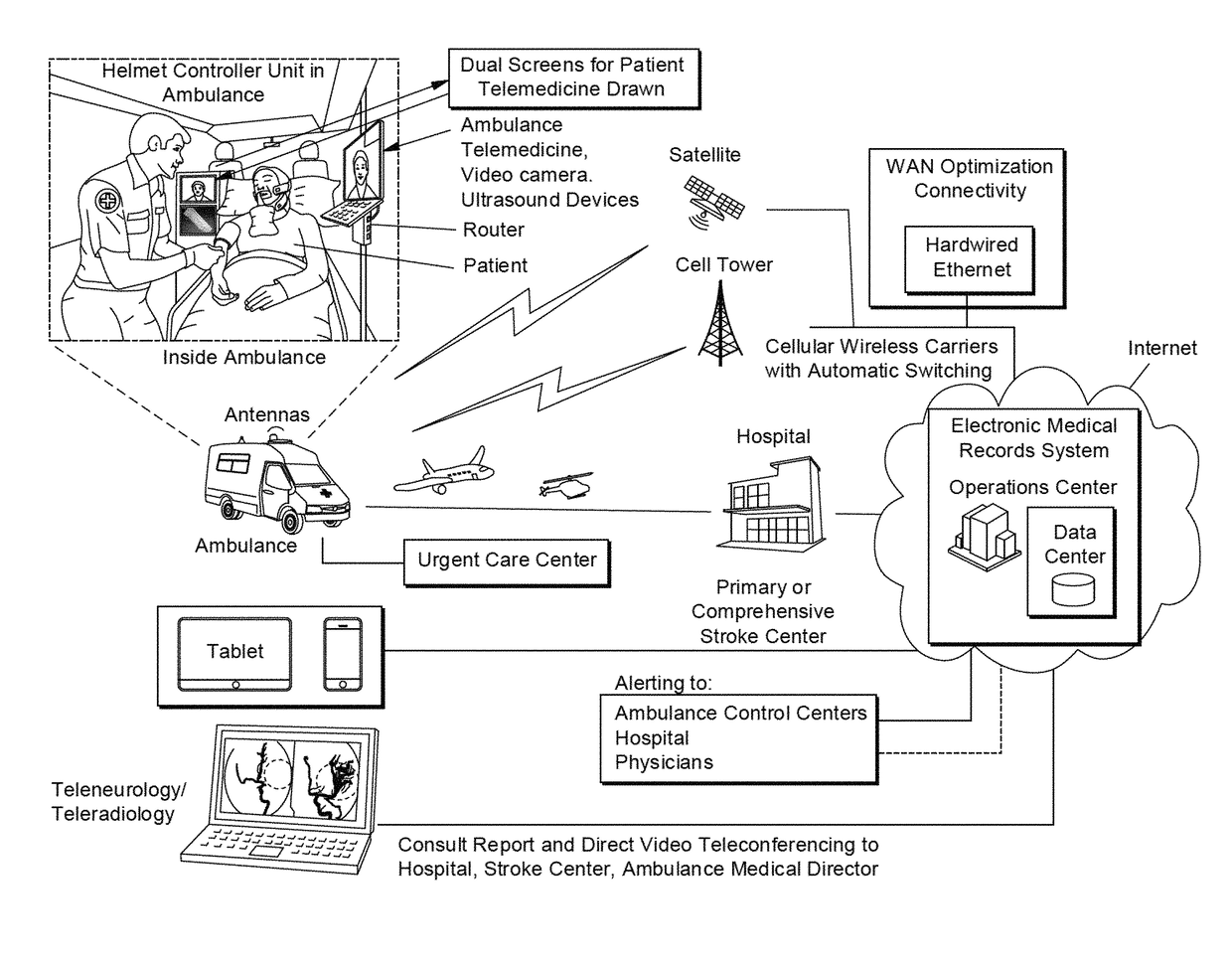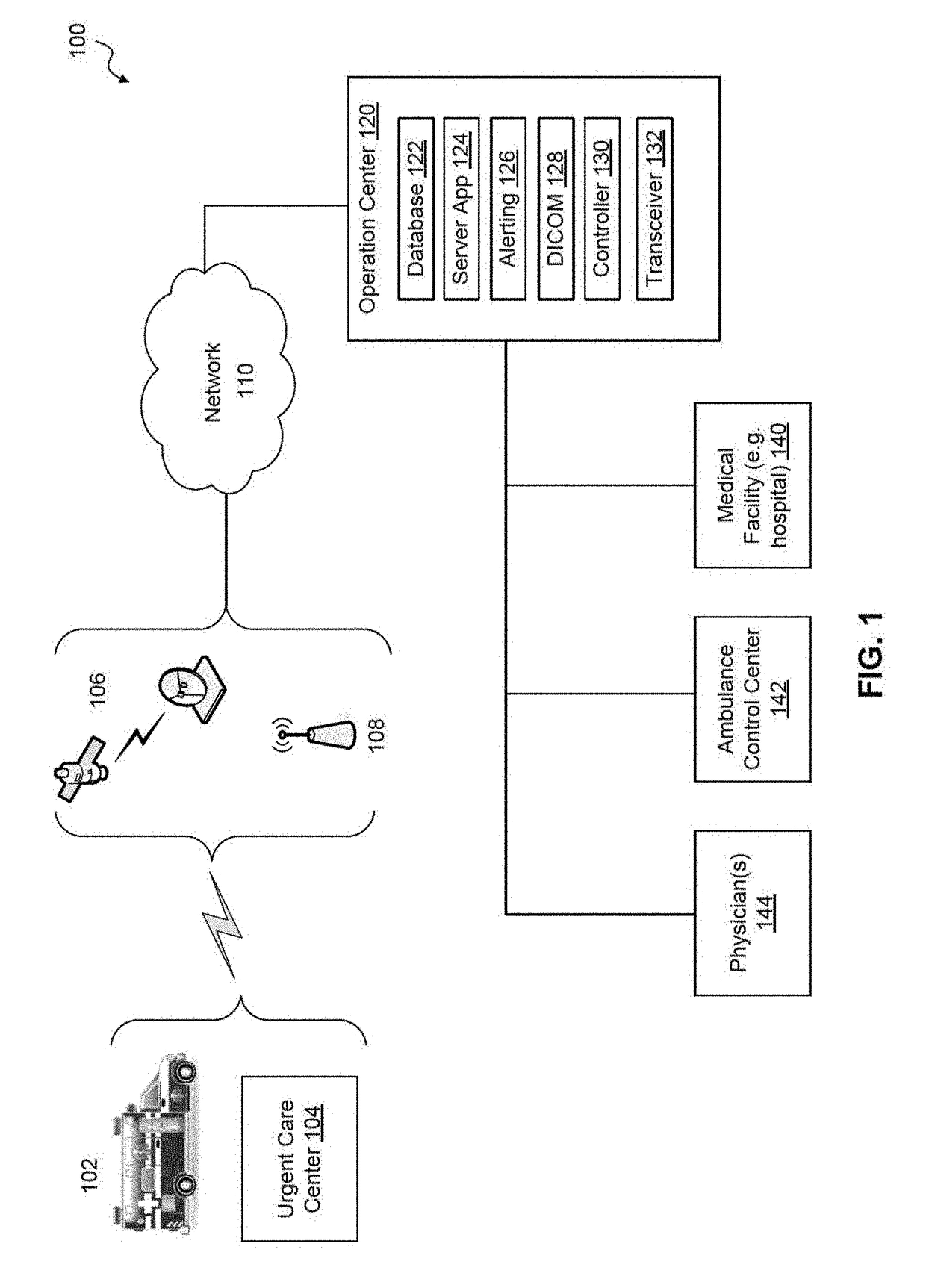Mobile medicine communication platform and methods and uses thereof
a mobile medicine and communication platform technology, applied in the field of mobile telemedicine, can solve the problems of not being able to find the appropriate hospital equipped to treat stroke patients, not receiving medical attention for many stroke victims, and the situation will only become more desperate, so as to reduce the resending of packets, increase the resiliency of telemedicine sessions, and reduce packet loss
- Summary
- Abstract
- Description
- Claims
- Application Information
AI Technical Summary
Benefits of technology
Problems solved by technology
Method used
Image
Examples
Embodiment Construction
[0056]In the following description, numerous specific details are set forth in order to provide a thorough understanding of the aspects of the present disclosure. However, it will be apparent to those skilled in the art that the aspects, including structures, systems, and methods, may be practiced without these specific details. The description and representation herein are the common means used by those experienced or skilled in the art to most effectively convey the substance of their work to others skilled in the art. In other instances, well-known methods, procedures, components, and circuitry have not been described in detail to avoid unnecessarily obscuring aspects of the disclosure.
[0057]As an overview, the present disclosure provides a systems and methods for assessing a patient for one or more traumatic brain injuries, such as for a stroke, and other neurological disorders while in transport in an emergency vehicle, such as an ambulance, emergency helicopter, airplane, trai...
PUM
 Login to View More
Login to View More Abstract
Description
Claims
Application Information
 Login to View More
Login to View More - R&D
- Intellectual Property
- Life Sciences
- Materials
- Tech Scout
- Unparalleled Data Quality
- Higher Quality Content
- 60% Fewer Hallucinations
Browse by: Latest US Patents, China's latest patents, Technical Efficacy Thesaurus, Application Domain, Technology Topic, Popular Technical Reports.
© 2025 PatSnap. All rights reserved.Legal|Privacy policy|Modern Slavery Act Transparency Statement|Sitemap|About US| Contact US: help@patsnap.com



